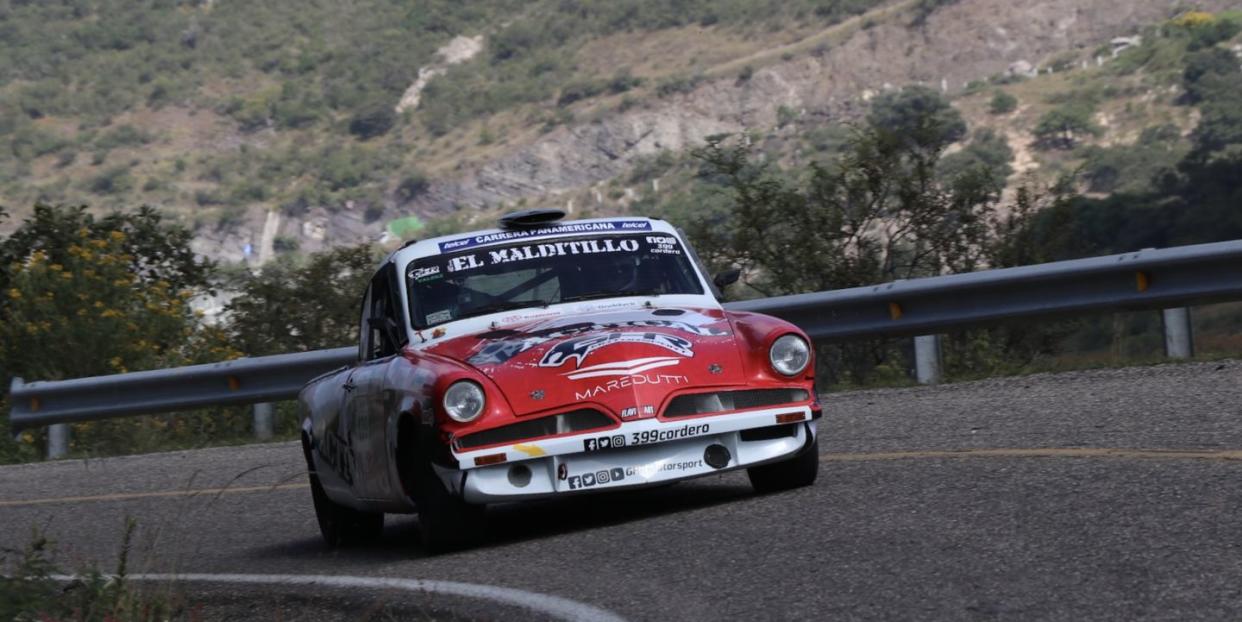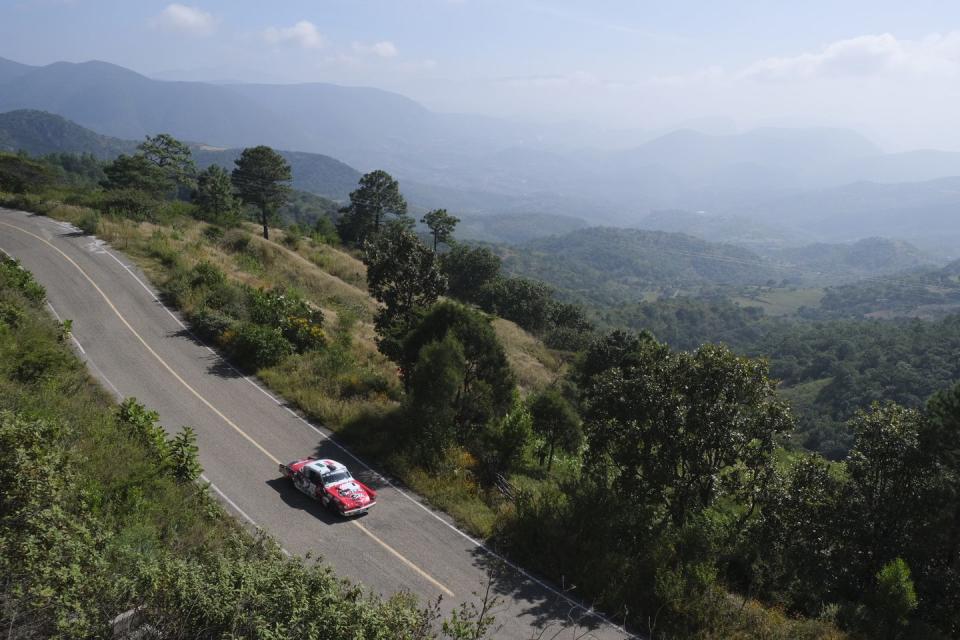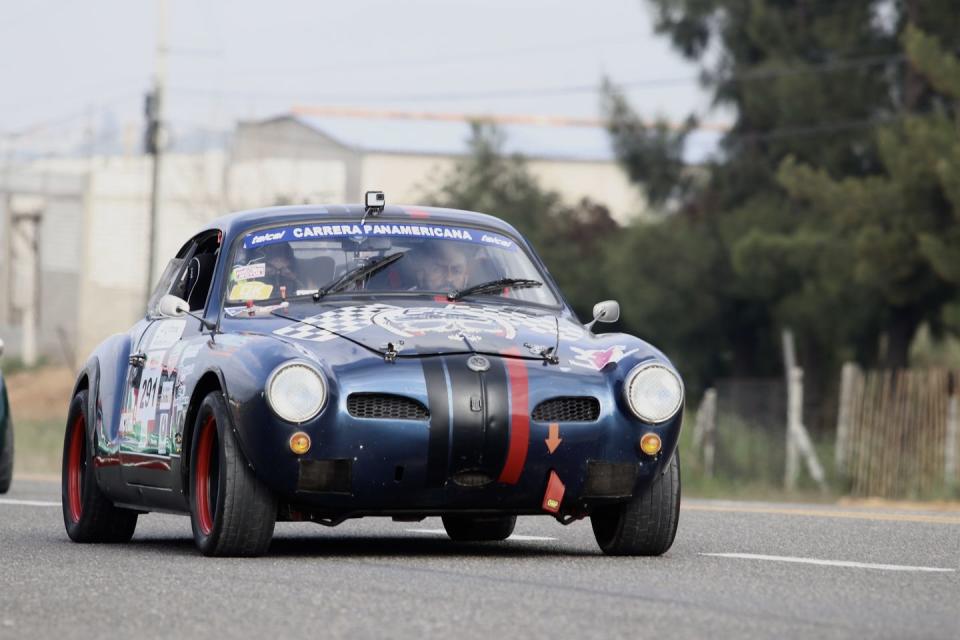La Carrera Panamericana Is the Experience of a Racing Lifetime

La Carrera Panamericana is a historic race across Mexico open to all manner of sports and GT cars. It runs this year from October 14-20.
There are timed stages run at full speed on great roads, connected by transit stages.
It's truly one of the great motorsports events you can run.
Seventy years ago, as the rest of the world still crawled out of the shambles of WWII and urbanization was just starting to replace agrarian lifestyles for much of the world’s population, Mexico completed the Panamerican Highway. The engineering edifice ran the entire length of the country, 2135 miles from Tuxtla Gutierrez at the Guatemalan border in the south to the Rio Grande in Nuevo Laredo in the north where Mexico becomes Texas. It is difficult to underestimate the great satisfaction Mexicans took in the completion of this engineering feat. The whole country swelled with pride from the achievement, and so they held a race. Not just parts of the road, or tribute parades in various cities through which the road ran, but an actual pedal-to-the-metal race that ran the entire 2135 miles, all up the country from south to north. The race was called La Carrera Panamericana, and it ran from 1950 to 1954.
The world's great automakers scrambled to participate and threw everything they had at it in hopes of winning. Ferrari and Mercedes sent their best F1 drivers and their fastest cars. Porsche still calls its best cars “Carreras” in honor of the Panamericana. The greatest drivers of the day participated: Americans Dan Gurney, Phil Hill, Carroll Shelby, and Bobby Unser; European pilotes Alberto Ascari, Louis Chiron, Juan Manuel Fangio, and Hans Hermann all drove.

Imagine doing something like that today. It would be impossible, wouldn’t it? But back then they did it, with the help of the army for crowd control and with the support of seemingly the entire country—there were no web commenters or NIMBY screamers then, it was seen as one’s patriotic duty to support this great celebration to show the world that Mexico had joined the rest of the developed nations with a transportation infrastructure that would allow commerce, tourism, and just simply road trips for everyone.
Like all great things, that original race eventually came to an end, not the least because it was so dangerous. Spectators and drivers had been killed in this and other great open-road races around the globe in Argentina, Cuba, and even the great Mille Miglia in Italy. Plus, a change of administrations in Mexico found a new presidente whose enthusiasm for racing was just not the same as the previous leader.
The event sat dormant for 34 years until a racer named Eduardo “Lalo” Leon, who had been racing off-road in the Baja 1000 and other desert stomps, decided to try to revive it. Leon’s father had taken him to the original race as a boy, and an uncle had actually participated in La Carrera. It had a profound effect on the young Leon. So, together with some racer friends, they revived it.
“Everyone said, ‘You’re crazy. That doesn’t make sense. You can’t do it,” said Eduardo’s daughter Karen Leon, who runs the race today.
But they did it. The new race was not held in the exact same format as it had been in the ‘50s; it did not run wide-open from Guatemala to Texas on open roads. Instead, they did it in sections over the course of a week, with transit stages connecting the closed-course special timed stages that ran on the best sections of pavement, in the mountains and hills of Mexico. (I have driven on these special stages and I can tell you they’ll match any of your favorite mountain roads here in the US of A any day. The pavement I drove on was in perfect condition.) You can get more info on the race here.
With that format, and with the cooperation of the Policia Federales to close the roads for the timed stages, the revived race has been a success for 35 years. It is put on through the valiant efforts of everything from the National Sports and Physical Culture Commission, the Mexican Organization of International Motorsports, Motorsports Federation, the National Rally Commission, the Rally Commission, and the Rally Automobile Club, along with many other supporters. Eduardo is still an enthusiastic champion of La Carrera, but his daughter Karen now runs the event with a staff of 10 to 12 and with many volunteers and, again, with the enthusiastic support of the Mexican people.
“People love the race and we respect them,” said Karen Leon. “The people respect the race and love being part of it. You see the hospitality of Mexico, that Mexico that we love, and that Mexico that we want to people to know and to enjoy.”

The race this year will run from October 14 to 2oth. It will start in the sunny coastal city of Vera Cruz, run north to the ancient colonial splendor of Oaxaca, into and around the madness of Mexico City, then to Quartero, Morelia, Guanajuato, San Luis Potosi, and finish in Durango. Organizers are limited by the government to 100 participants, 80 of them racers and 20 of them in a new class called Sports and Classics.
For the racers, there are several categories for entries, from the original Panamerican Cars Group for vehicles that raced in the original Panam from 1950 to 1954; Historic Cars from 1955 to 1973; and Exhibition Cars that cover a broad spectrum of automobilia, even including hot rods.
For those not wanting to compete but who still want to be a part of the Panamericana, there are the Classic Tour and Sport Tour Categories. Classic Tour is for cars from 1950 to 1979 and Sport Tour is for cars from 2015 to 2020. So bring your GT3 or even your Mustang.
The organizers recommend services that can assist in getting your car to the race and there is a convoy for participants who are trailering their cars from Texas to Vera Cruz.
I can say that I’ve been to races in Mexico and driven in races in Mexico and loved every minute of it. It’s a great way to see what may be for you a new country, meet new people who are fellow racers and car enthusiasts, and to garner a lifetime of great memories. As Mark Twain said more than a century ago, “Travel (and he might as well have added racing in Mexico) is fatal to prejudice, bigotry, and narrow-mindedness, and many of our people need it sorely on these accounts. Broad, wholesome, charitable views of men and things cannot be acquired by vegetating in one little corner of the earth all one’s lifetime.”
Share your thoughts and memories of the great La Carrera Panamericana race in the comments below.

